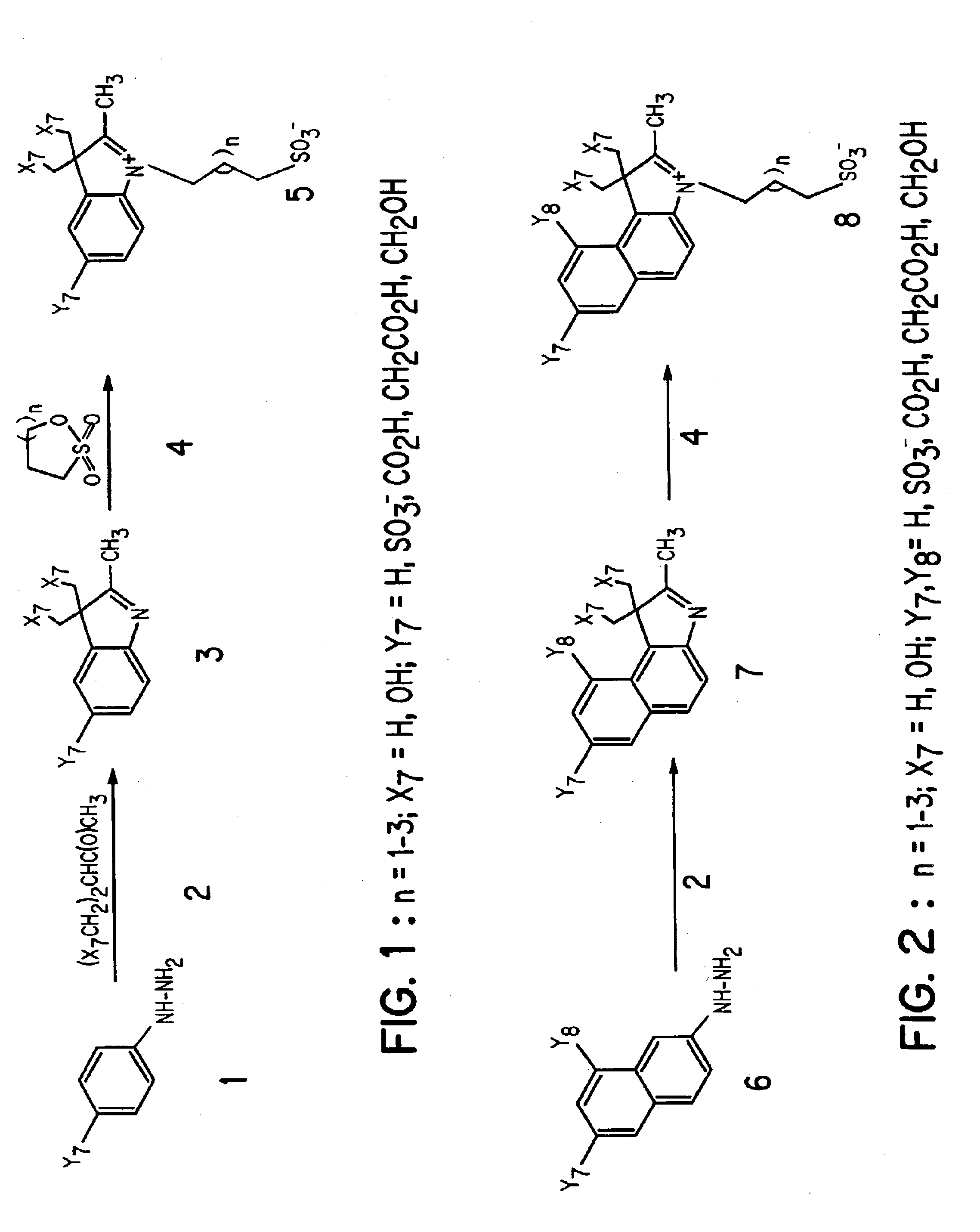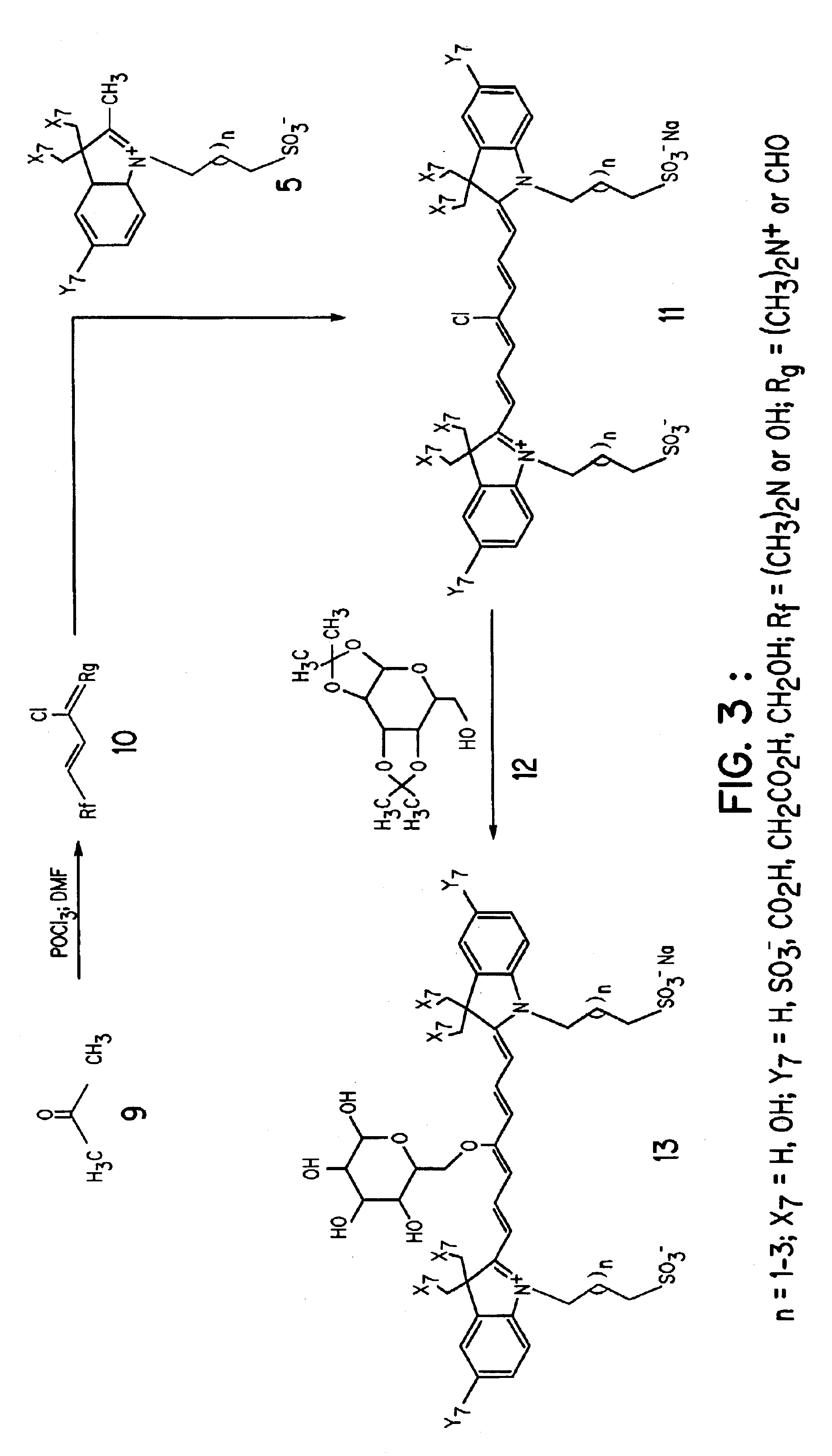Compounds as dynamic organ function monitoring agents
- Summary
- Abstract
- Description
- Claims
- Application Information
AI Technical Summary
Benefits of technology
Problems solved by technology
Method used
Image
Examples
example 1
Synthesis of Indole Disulfonate
FIG. 1, Compound 5, Y7=SO3−; X7=H; n=1
[0052]A mixture of 3-methyl-2-butanone (25.2 mL), and p-hydrazinobenzenesulfonic acid (15 g) in acetic acid (45 mL) was heated at 110° C. for 3 hours. After reaction, the mixture was allowed to cool to room temperature and ethyl acetate (100 mL) was added to precipitate the product, which was filtered and washed with ethyl acetate (100 mL). The intermediate compound, 2,3,3-trimethylindolenium-5-sulfonate (FIG. 1, compound 3) was obtained as a pink powder in 80% yield. A portion of compound 3 (9.2 g) in methanol (115 mL) was carefully added to a solution of KOH in isopropanol (100 mL). A yellow potassium salt of the sulfonate was obtained in 85% yield after vacuum-drying for 12 hours. A portion of the 2,3,3-trimethylindolenium-5-sulfonate potassium salt (4 g) and 1,3-propanesultone (2.1 g) was heated in dichlorobenzene (40 mL) at 110° C. for 12 hours. The mixture was allowed to cool to room temperature and the resul...
example 2
Synthesis of Indole Disulfonate
FIG. 1, Compound 5, Y7=SO3−; X7=H; n=2
[0054]This compound was prepared by the same procedure described in Example 1, except that 1,4-butanesultone was used in place of 1,3-propanesultone.
example 3
Synthesis of Benzoindole Disulfonate
FIG. 2, Compound 8Y, 7, Y8=SO3−; X7=H; n=2
[0055]This compound was prepared by the same procedure described in Example 1, except that hydrazinonaphthalenedisulfonic acid was used in place of hydrazinobenzenesulfonic acid.
[0056]Other compounds prepared by a similar method include polyhydroxyindoles such as:
PUM
| Property | Measurement | Unit |
|---|---|---|
| Pharmaceutically acceptable | aaaaa | aaaaa |
Abstract
Description
Claims
Application Information
 Login to View More
Login to View More - R&D
- Intellectual Property
- Life Sciences
- Materials
- Tech Scout
- Unparalleled Data Quality
- Higher Quality Content
- 60% Fewer Hallucinations
Browse by: Latest US Patents, China's latest patents, Technical Efficacy Thesaurus, Application Domain, Technology Topic, Popular Technical Reports.
© 2025 PatSnap. All rights reserved.Legal|Privacy policy|Modern Slavery Act Transparency Statement|Sitemap|About US| Contact US: help@patsnap.com



